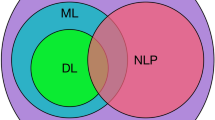Abstract
The purpose was to develop a natural language processing algorithm, which will input data from oral examination transcripts to a structured database. Four case vignettes were produced for primary, mixed, and permanent dentition patients with varying degree of soft tissue pathology, caries, existing restorations and occlusion relationships. After calibration, dental students were instructed to perform simulated oral examinations based on the case vignettes, using natural language as they would to an assistant who was charting the case. The investigator transcribed the audio recordings of the simulated oral exams. Twenty simulated oral examinations were collected to develop a natural language processing algorithm in JAVA. The algorithm was reviewed and refined. Four additional simulated oral examinations were performed and transcribed as validation. Volunteers were asked to read the validation transcripts and fill in paper dental charts accordingly. The accuracy of the human volunteers and the algorithm were calculated. The case vignettes had an average of 56 data points. After improvements, the recall rate of algorithm extracting data from transcripts was 99.0% ± 3.3% and the precision was 97.8% ± 4.1%. For the validation transcripts, human subjects had a 100% recall and precision rate. The mean recall and precision of algorithm processing the validation transcripts were 98.4% ± 3.2% and 98.3% ± 1.9%, respectively. There was no statistic difference between human and the algorithm. Natural language processing algorithm performs comparably with humans. The natural language processing algorithm potentially serves as a starting point to implement speech recognition for a voice-activated automatic dental charting system.





Similar content being viewed by others
References
Benesty J, Sondhi MM, Huang Y. Springer handbook of speech processing. Springer; 2007.
Furui S. History and development of speech recognition. Speech Technology. Springer; 2010.
Jurafsky D. Speech & language processing. Pearson Education India; 2000.
Ghai W, Singh N. Literature review on automatic speech recognition. Int J Comput Appl. 2012;41(8):42–50.
Gaikwad SK, Gawali BW, Yannawar P. A review on speech recognition technique. Int J Comput Appl. 2010;10(3):16–24.
Klatt EC. Voice-activated dictation for autopsy pathology. Comput Biol Med. 1991;21(6):429–33.
Robbins AH, Horowitz D, Srinivasan M, Vincent M, Shaffer K, Sadowsky N, et al. Speech-controlled generation of radiology reports. Radiology. 1987;164(2):569–73.
Goss FR, Blackley SV, Ortega CA, Kowalski LT, Landman AB, Lin CT, et al. A clinician survey of using speech recognition for clinical documentation in the electronic health record. Int J Med Inform. 2019;130:103938. https://doi.org/10.1016/j.ijmedinf.2019.07.017.
Saxena K, Diamond R, Conant RF, Mitchell TH, Gallopyn G, Yakimow KE. Provider adoption of speech recognition and its impact on satisfaction, documentation quality, efficiency, and cost in an inpatient EHR. AMIA Summits Transl Sci Proc. 2018;2018:186.
ReactionData. Speech Enabled EHRs. 2018. https://www.reactiondata.com/report/speech-enabled-ehrs-2018.
Reynolds P, Harper J, Dunne S. Better informed in clinical practice–a brief overview of dental informatics. Br Dent J. 2008;204(6):313.
Schleyer TK, Thyvalikakath TP, Spallek H, Torres-Urquidy MH, Hernandez P, Yuhaniak J. Clinical computing in general dentistry. J Am Med Inform Assoc. 2006;13(3):344–52.
Irwin J, Fernando S, Schleyer T, Spallek H. Speech recognition in dental software systems: features and functionality. Stud Health Technol Inform. 2007;129(Pt 2):1127–31.
HenrySchein. Dentrix VoicePro. 2011. http://www.dentrixcom/products/voicepro.
Patterson. Eaglesoft Voice Module. 2014. https://pattersonsupport.custhelp.com.
White GM. Natural language understanding and speech recognition. Readings in human–computer interaction. Elsevier; 1995.
Hirschberg J, Manning CD. Advances in natural language processing. Science. 2015;349(6245):261–6.
Irwin JY, Harkema H, Christensen LM, Schleyer T, Haug PJ, Chapman WW. Methodology to develop and evaluate a semantic representation for NLP. AMIA Annu Symp Proc. 2009;2009:271–5.
Deitel PJ. JAVA how to program. Pearson Education India; 2002.
Harris EF. Tooth-coding systems in the clinical dental setting. Dent Anthropol J. 2005;18(2):43–9.
Irwin RJY. Speech to chart: speech recognition and natural language processing for dental charting. Doctoral Dissertation: University of Pittsburgh; 2010.
Google. Google Cloud Speech-to-Text. 2020. https://cloud.google.com/speech-to-text/docs.
Mozilla. DeepSpeech documentation. 2020. https://github.com/mozilla/DeepSpeech.
Acknowledgements
We thank Noel Childers, Stephen Mitchell, Michelle Robinson, and Janice Jackson for their insightful comments on the work and the manuscript.
Funding
The research was not supported by a funding source.
Author information
Authors and Affiliations
Corresponding author
Ethics declarations
Conflict of interest
The authors have no conflicts of interests.
Ethics approval
The study protocol was reviewed and approved by the Institutional Review Board for Human Use at the University of Alabama at Birmingham.
Additional information
Publisher's Note
Springer Nature remains neutral with regard to jurisdictional claims in published maps and institutional affiliations.
This article is part of the topical collection “Artificial Intelligence for HealthCare” guest edited by Lydia Bouzar-Benlabiod, Stuart H. Rubin and Edwige Pissaloux.
Rights and permissions
About this article
Cite this article
Zhang, Y., Bogard, B. & Zhang, C. Development of Natural Language Processing Algorithm for Dental Charting. SN COMPUT. SCI. 2, 309 (2021). https://doi.org/10.1007/s42979-021-00673-x
Received:
Accepted:
Published:
DOI: https://doi.org/10.1007/s42979-021-00673-x




